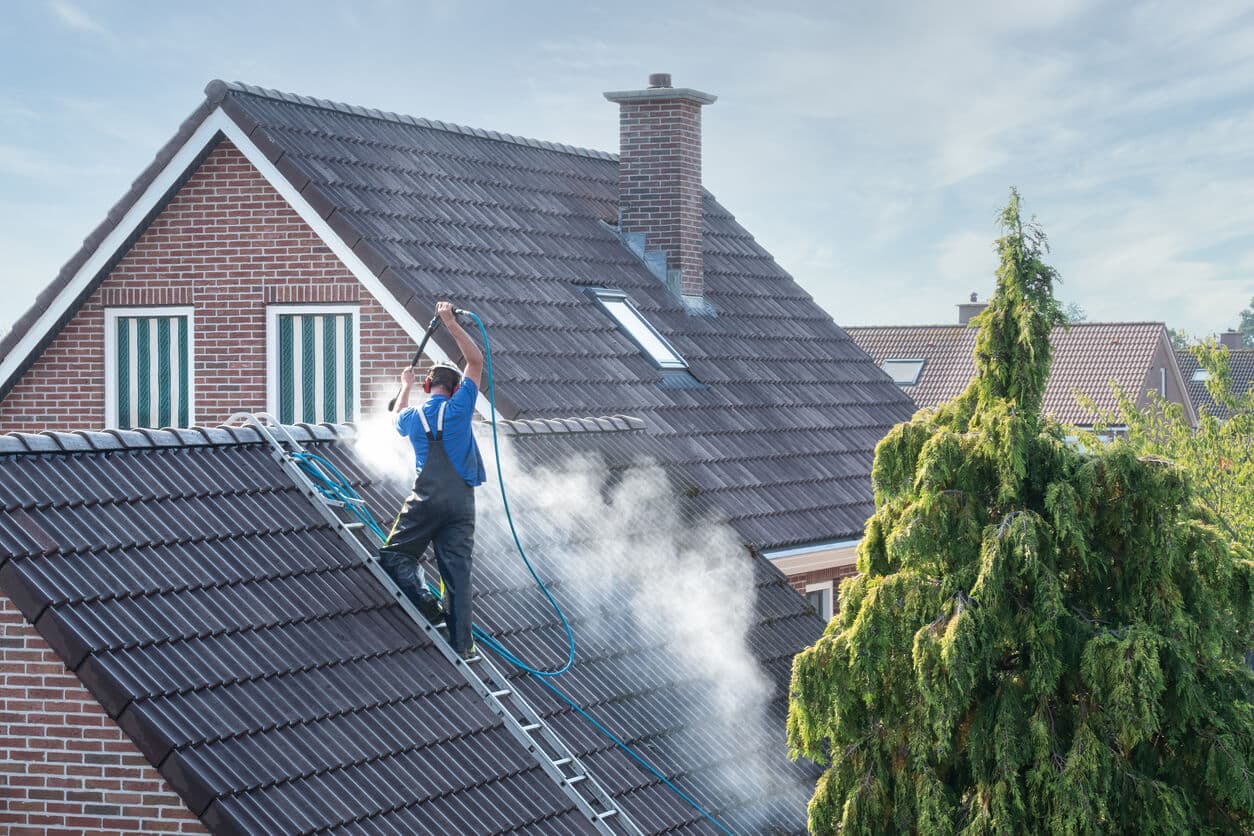
Maintaining your roof is about protecting your entire home or commercial property from costly damage. Whether you’re managing a residential home, an industrial facility, or a retail building, roof maintenance plays a crucial role in preserving structural integrity and extending the lifespan of your roofing system.
Neglecting routine upkeep can turn minor issues into major repairs, especially after storms or seasonal changes. From flat and metal roofs to tile and shingle systems, every roof type has unique vulnerabilities that require regular attention.
But what does proper roof maintenance involve, and how can it help you save thousands in long-term repair costs?
Let’s break it down with a checklist that applies to both residential and commercial roof maintenance, offering practical tips and insights to help you stay ahead of potential issues.
What Does Roof Maintenance Actually Include?
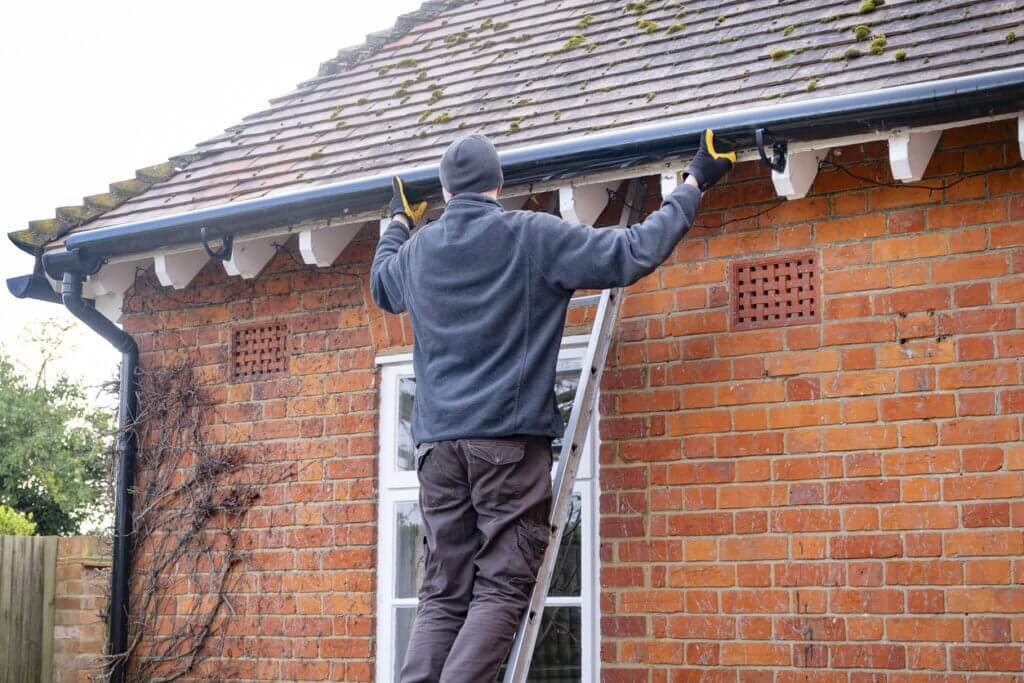
Routine roof maintenance services are designed to catch and correct small issues before they escalate. A professional inspection will cover everything from visual assessments to minor on-the-spot repairs.
Whether you’re enrolled in a roof maintenance program or doing seasonal checks yourself, knowing what’s included helps you stay informed and proactive.
Visual Inspections of Flashing, Shingles, Tiles, and Sealants
A thorough visual inspection is the first line of defense. During these checks, your roofing technician will:
- Examine flashing around chimneys, vents, and skylights to ensure it’s tightly sealed and not pulling away.
- Look for cracked, missing, or curling shingles—especially critical for asphalt roof maintenance and shingle roof maintenance.
- Check for loose or broken clay or concrete tiles, both of which can allow water to penetrate and cause damage beneath.
- Inspect sealants for signs of aging or deterioration, particularly on metal roof maintenance projects where seams and fasteners are exposed.
Cleaning is also an important part of these inspections. Professionals often remove leaves, branches, and debris from the roof surface, valleys, and gutters. Clogged gutters can lead to standing water and roof rot, particularly in flat roof maintenance scenarios where drainage is more limited.
This step is often emphasized in commercial roof maintenance services, as even minor drainage issues can damage valuable equipment or inventory.
Checking For:
- Nail Pops: Over time, nails can work their way out of shingles, especially in high-heat climates or after heavy storms. These raised nails create entry points for water. Catching them early is key for preventing leaks, especially in asphalt shingle roof maintenance routines.
- Soft Decking: If the roof feels spongy underfoot or shows signs of sagging, this may indicate moisture damage in the decking below. This is a red flag that needs immediate attention, often identified during preventative roof maintenance inspections.
- Pipe Boot Deterioration: The rubber boots around plumbing vent pipes can dry out, crack, or break down with UV exposure. These are some of the most common causes of slow leaks. Whether it’s a residential roof maintenance visit or a commercial roof maintenance contract, pipe boot checks are essential to any comprehensive inspection.
Documenting Any Minor Repairs to Prevent Water Intrusion
One of the most valuable parts of a roof maintenance plan is the documentation. Any small issues—loose flashing, missing shingles, deteriorated sealant—should be logged and addressed immediately to prevent them from turning into expensive repairs. This documentation is especially important for building owners with commercial roof maintenance contracts, as it provides a record of due diligence and can support insurance claims if larger damage occurs.
Professional roof maintenance services will often include digital photos, written reports, and cost estimates for recommended repairs. This transparency helps you plan your budget, avoid surprises, and prioritize repairs before the next rainy season or snowstorm.
Why Preventative Roof Maintenance Matters
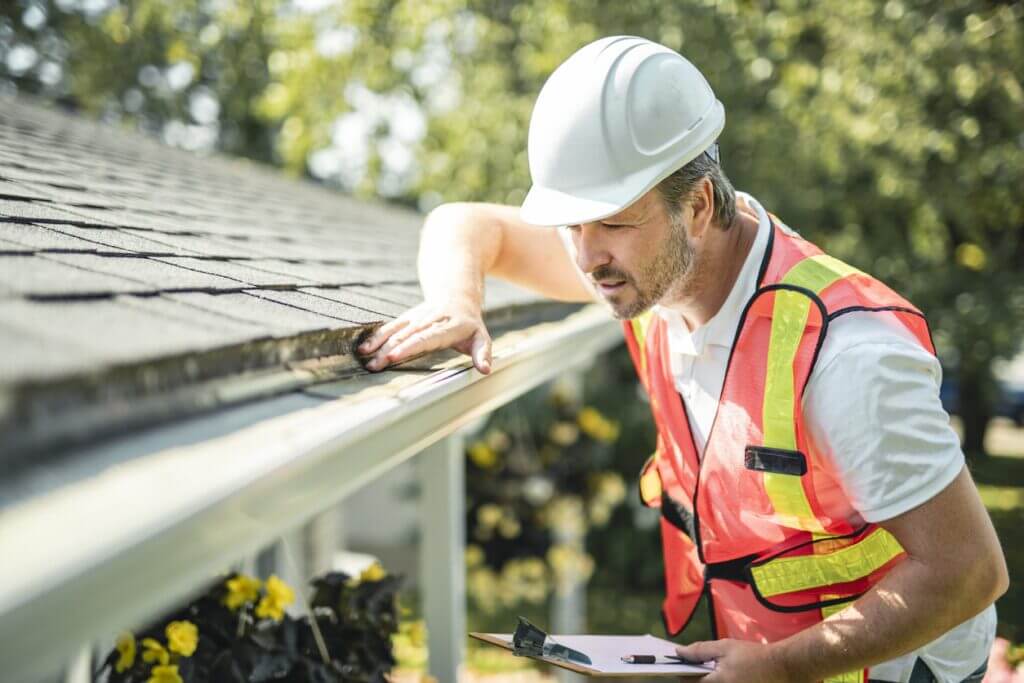
Preventative roof maintenance is more than a seasonal chore—it’s a proactive investment in your property’s safety, value, and longevity. Whether you’re managing a large commercial complex or a single-family home, ongoing care reduces long-term costs, helps catch early signs of damage, and keeps your roof performing as it should.
Here’s why skipping maintenance could end up costing you far more than a regular service call.
1. Moisture = Mold, Rot, and Structural Damage
Unchecked moisture is the enemy of any roofing system. Even a small leak, caused by a missing shingle, cracked tile, or deteriorated sealant, can lead to:
- Mold and mildew growth in attic spaces or behind walls
- Wood rot in roof decking and structural framing
- Compromised insulation that drives up heating and cooling costs
For both residential and commercial roof maintenance, keeping water out is job number one. By identifying problem areas early, such as lifted flashing or clogged drainage systems, preventative maintenance helps you avoid interior damage that could cost thousands to repair.
According to the Environmental Protection Agency (EPA), mold can begin growing within 24 to 48 hours of water intrusion, making prompt roof care essential.
2. Extends Lifespan of Shingles, Tile, or Metal Surfaces
Roof materials may be rated to last 20, 30, or even 50 years—but that estimate assumes proper upkeep. Dirt buildup, algae growth, and exposure to standing water can degrade roofing materials much faster than expected.
- Asphalt shingle roof maintenance involves clearing debris and inspecting for granule loss.
- Clay and concrete tile roof maintenance includes checking for cracks and replacing broken tiles to prevent water seepage.
- Metal roof maintenance requires rust checks, sealant touch-ups, and fastener adjustments to keep panels watertight.
By enrolling in a roof maintenance program or scheduling regular inspections, property owners can significantly extend the usable life of their roofs. In many cases, this added lifespan offsets the cost of the service itself.
3. Validates Manufacturer Warranties
Many homeowners and building managers don’t realize that roof warranties often include a clause requiring ongoing maintenance. Failing to perform regular inspections and minor repairs can void your coverage, even if the material itself is still under warranty.
Most commercial roof maintenance companies understand this and build compliance into their contracts, offering detailed inspection reports and repair documentation. For residential roofs, keeping a roof maintenance checklist and logging all work performed—no matter how minor—can protect your investment should you need to file a warranty claim.
4. Reduces Likelihood of Emergency Repairs After Storms
Preventative care gives you a stronger, more resilient roof when severe weather hits. Loose shingles, compromised flashing, and blocked gutters are common issues that worsen during high winds or heavy rainfall. By addressing these issues ahead of time, you greatly reduce the risk of:
- Sudden leaks during downpours
- Wind-driven water intrusion
- Damaged insulation and attic mold after storms
For commercial flat roof maintenance, it’s especially important to inspect membranes and drainage systems before and after major weather events. If you’re in an area prone to hurricanes, hail, or snow, scheduling seasonal roof maintenance services is a smart way to prevent emergency calls and roof failure.
5. Especially Critical for Homes 40+ Years Old (Mr. Roofer’s Specialty)
Older homes bring charm—but also aging infrastructure. For homes that are 40 years or older, routine roof maintenance is essential. These roofs often have outdated materials, worn decking, or multiple repair layers that need more frequent attention.
Mr. Roofer of Atlanta specializes in residential roof maintenance for older homes across the metro area, helping homeowners maintain structural safety and energy efficiency without sacrificing character.
Whether it’s asphalt, cedar shake, slate, or tile roof maintenance, Mr. Roofer’s tailored service plans address the unique challenges of aging roofs while helping owners avoid premature replacements.
Roof Maintenance Checklist by Material Type
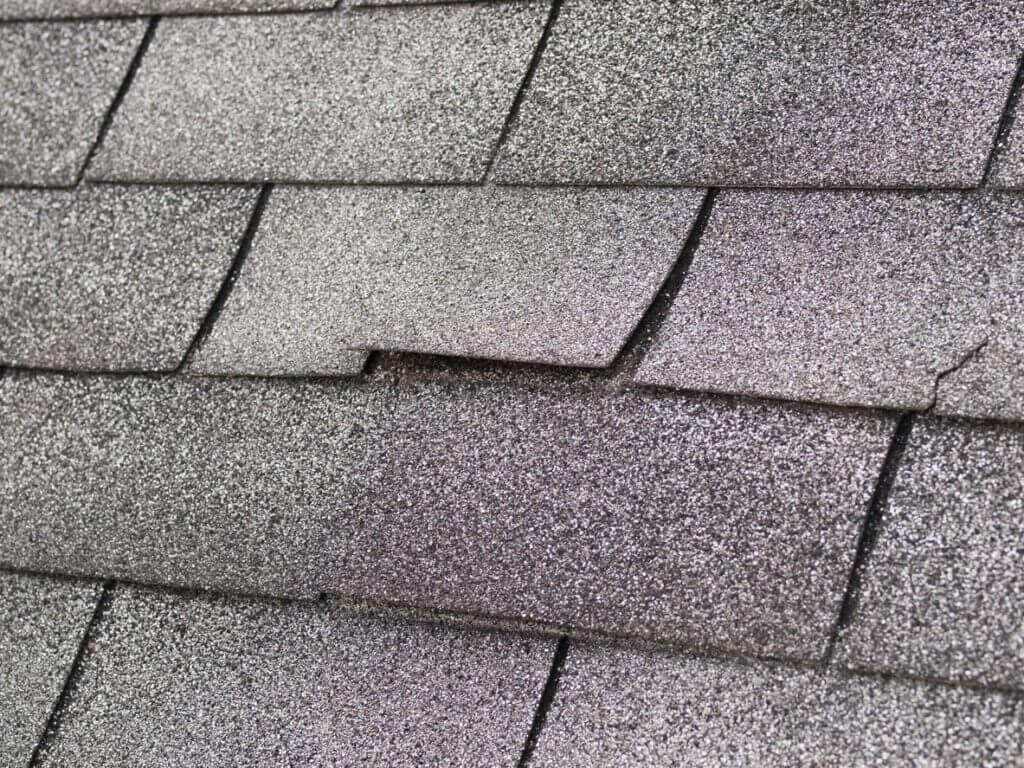
Different roofing materials come with their own maintenance requirements, vulnerabilities, and signs of wear. Whether you’re a homeowner or a facilities manager, knowing what to look for based on your specific roof type ensures more effective roof maintenance and helps prevent premature failure.
Below is a quick reference, followed by detailed checklists for each material.
Roof Type | Key Maintenance Focus Areas |
Asphalt Shingle | Granule loss, curling, soft decking |
Metal | Fastener inspection, seam sealing, and rust prevention |
Flat (Commercial & Res) | Ponding water, membrane integrity, flashing inspection |
Clay Tile | Cracked tiles, flashing wear, and underlayment condition |
Concrete Tile | Water absorption, impact damage |
Cedar Shake | Insect damage, rotting, splitting/drying |
Slate | Cracked slates, metal flashing corrosion, loose fasteners |
1. Asphalt Shingle Roof Maintenance
Asphalt shingles are among the most common roofing materials for homes in the U.S. Regular asphalt shingle roof maintenance helps you spot surface issues before they lead to water damage. Here’s how:
- Granule Loss: Look for bare patches or excessive granules in gutters. This is an early sign the shingles are aging or deteriorating.
- Curling: Shingles that curl upward can allow wind-driven rain to seep underneath, especially around ridges and edges.
- Soft Spots: Gently press suspected areas of the roof deck—sponginess may indicate rot or trapped moisture beneath the surface.
The National Roofing Contractors Association (NRCA) recommends annual inspections and after-storm checks for asphalt systems to extend their usable life.
2. Metal Roof Maintenance
Metal roof maintenance is key to preventing leaks at seams and fasteners, particularly in standing seam or exposed-fastener systems used in both homes and commercial buildings. Here’s why:
- Fastener Integrity: Screws can back out or corrode over time, especially in older systems. Replace loose or rusted fasteners as needed.
- Seam Sealing: Check for gaps in vertical seams or sealant failures around edges, ridge caps, and penetrations.
- Corrosion Control: Surface rust, especially around fasteners or scratches, should be treated with appropriate metal roof coating systems like GACO or Karnak.
Consistent inspections can prevent minor issues from escalating into full roof replacements—especially valuable for commercial facilities.
3. Flat Roof Maintenance (Commercial & Residential)
Flat roofs require a proactive maintenance plan due to their susceptibility to water pooling and membrane failures. This is especially critical for commercial roof maintenance programs and multifamily housing. The following is what you need to pay attention to:
- Ponding Water: Look for areas where water collects and doesn’t drain within 48 hours. This can stress membranes and lead to leaks or sagging.
- Membrane Splits: Inspect for tears, blistering, or cracking in EPDM, TPO, or modified bitumen materials.
- Flashing Inspection: Check where membranes terminate at walls or penetrations to ensure proper seals are still intact.
4. Clay Tile Roof Maintenance
Clay tile roofs are durable but fragile. Cracks and flashing issues are common maintenance concerns—especially in homes over 40 years old. Below are some of the reasons why clay tile roof maintenance is important:
- Cracked Tiles: Even small cracks can allow water intrusion and damage the underlayment. Replace broken pieces carefully.
- Flashing Issues: Flashing around chimneys, valleys, and skylights often wears faster than the tile itself.
- Underlayment Checks: Because tiles are not watertight, the condition of the waterproof underlayment beneath them is critical—especially in storm-prone areas.
Avoid walking directly on clay tiles during inspections—use walk pads or contact a professional roof maintenance service.
5. Concrete Tile Roof Maintenance
Though less fragile than clay, concrete roof tiles require regular care to stay waterproof and structurally sound. This is why:
- Water Absorption: Unlike clay, concrete is porous. Over time, absorbed moisture can lead to algae growth or freeze-thaw damage in colder climates. Applying a breathable sealant may help.
- Impact Damage: Concrete tiles can crack from hail or falling branches. Regular inspections after storms are key.
6. Cedar Shake Roof Maintenance
Cedar shake roofs are beautiful but labor-intensive. They’re vulnerable to pest activity, rot, and weathering—especially in humid climates. Let’s elaborate:
- Insect Activity: Carpenter ants and termites can burrow into aging wood. Keep tree limbs trimmed and check for small holes or sawdust.
- Rot: Look for discolored, soft, or crumbling shakes, particularly in shaded areas where drying is slower.
- Drying/Cracking: Extreme sun exposure can cause shakes to split and curl. Periodic treatments with wood preservatives or fungicides are recommended.
7. Slate Roof Maintenance
Slate roofs are long-lasting, but they still require regular upkeep to remain watertight and structurally sound. Here’s why:
- Broken Slates: Broken or missing pieces must be replaced with matching slates to preserve waterproofing and appearance.
- Metal Flashing: Copper or galvanized steel flashing around valleys and chimneys can corrode over time, especially in acidic rain zones.
- Fastener Checks: Slates are often hung on nails or hooks that can corrode and loosen. Proper inspections ensure the slates remain securely in place.
Always employ experienced professionals for slate roof maintenance, as improper handling can cause more damage.
Seasonal Roof Maintenance Tips for Atlanta Homeowners
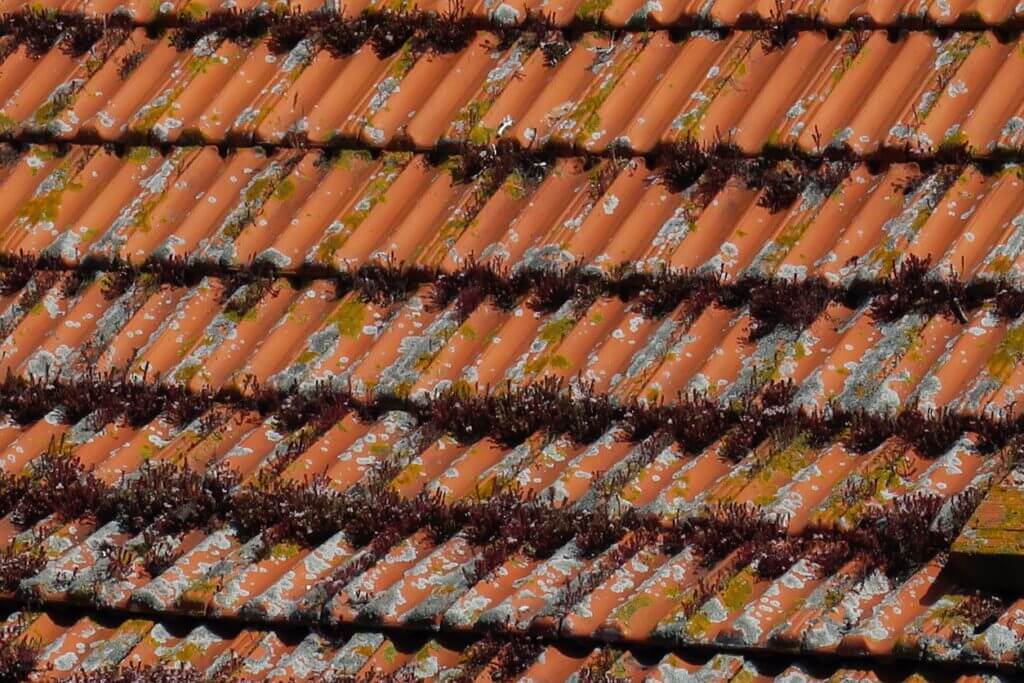
Atlanta’s climate brings unique challenges to your roof throughout the year—from spring rainstorms and summer heatwaves to fall leaf buildup and occasional winter cold snaps. Staying ahead of these seasonal shifts with timely roof maintenance can prevent long-term issues and reduce your risk of leaks, rot, and structural deterioration.
Below is a quick-reference table followed by detailed tips tailored to each season.
Season | Key Maintenance Tasks |
Spring | Check for winter damage, clean gutters, and inspect flashings |
Summer | Monitor UV wear, inspect for material expansion or blistering |
Fall | Remove debris, check drainage, trim overhanging branches |
Winter | Inspect the attic for frost, check the insulation, and ventilation |
1. Spring: Prep for Rain and Post-Winter Damage
As temperatures rise and rainfall increases, spring is the ideal time to inspect for any damage caused by winter freezes or storms. Timely roof maintenance services in spring can stop minor issues from becoming major headaches during the rainy season.
- Inspect for Winter Freeze Damage: While snow is rare in Atlanta, freezing temps can still cause sealants to crack, flashing to pull away, or roof tiles to shift. Check especially around pipe boots, valleys, and roof edges.
- Clean Gutters Before Rain Season: Clear out leaves, pine needles, and debris from gutters and downspouts to ensure proper drainage. Clogged gutters can lead to fascia rot or water intrusion under shingles and tiles.
The Georgia Emergency Management and Homeland Security Agency (GEMA/HS) recommends spring storm readiness, which should include a roof inspection as part of your home prep.
2. Summer: Defend Against Heat and UV Damage
Atlanta summers consist of hot and humid conditions that can wear down roofing materials over time. Summer roof maintenance should focus on early signs of sun damage and structural shifting due to expansion.
- Check for UV Cracking or Blistering: Asphalt roofs and flat roofing membranes are especially prone to surface blistering, cracking, or discoloration from intense sun exposure. Look for raised areas, brittleness, or fading.
- Look for Expansion-Related Separation: Metal roofing and flashing systems expand and contract with temperature swings. Over time, this can loosen seams or create small gaps where water can enter. Sealant reapplication or fastener adjustments may be needed.
For older homes in particular, this is a smart time to check residential roof maintenance records and schedule preventative services.
3. Fall: Prepare for Leaves and the Wet Season
Autumn is leaf season in Georgia, and while the scenery is beautiful, falling debris can clog up your roof drainage system and lead to serious water problems if left unchecked.
- Remove Tree Debris, Ensure Proper Drainage: Leaves, acorns, and sticks can quickly pile up in roof valleys, gutters, and scuppers. Left alone, they can cause standing water and rot. Clear debris and confirm that all drainage paths are unobstructed.
- Trim back overhanging branches that drop debris or scrape roofing materials in high wind.
Fall is also an excellent time to inspect flashing and sealants, since you’ll want your roof in top shape before winter.
4. Winter: Watch for Condensation and Heat Loss
Though Atlanta winters are milder than in northern regions, nighttime freezes and poor attic ventilation can still pose a threat to your roof system. Winter roof maintenance tips focus on interior conditions that can lead to long-term damage.
- Look for Condensation or Attic Frost: Improper airflow in your attic can trap warm, moist air rising from the home below. This leads to condensation on the underside of the roof deck or frost buildup on cold mornings—both of which promote mold and wood rot.
- Check Insulation and Ventilation: A properly insulated attic helps regulate temperatures and prevent ice damming (rare, but possible during cold snaps). Make sure vents are unblocked and insulation is evenly distributed.
Commercial Roof Maintenance: Protecting Your Business Investment
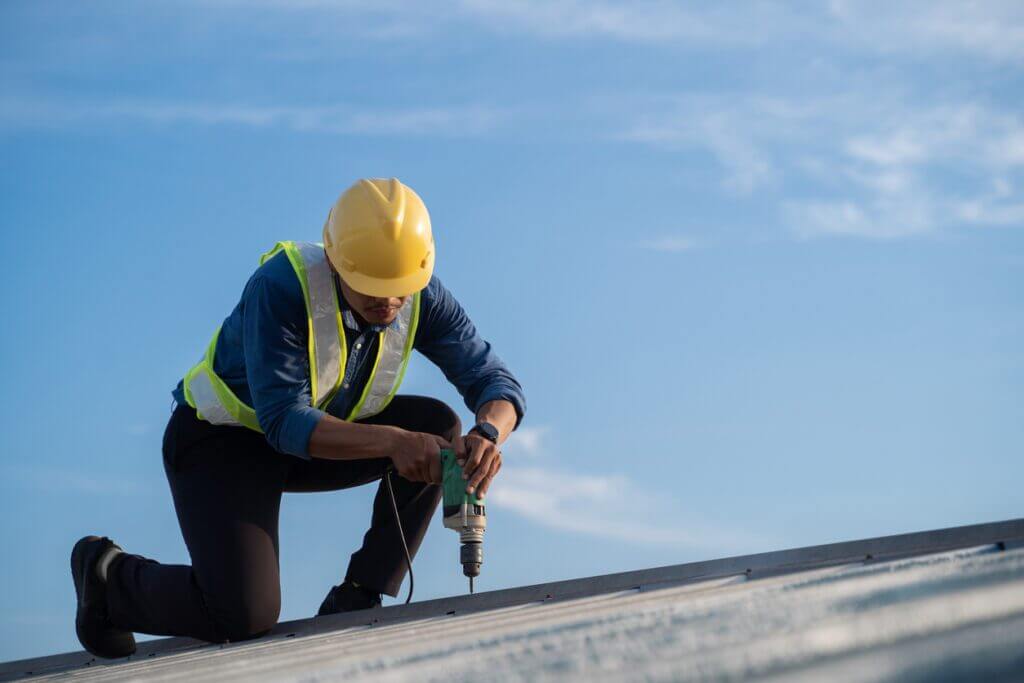
Commercial buildings face unique roofing challenges compared to residential properties. With larger surface areas, more complex drainage systems, and heavier mechanical loads, the stakes are much higher when something goes wrong.
That’s why consistent, professional commercial roof maintenance is essential, not just to avoid costly repairs, but to protect your long-term investment, ensure tenant satisfaction, and keep operations running smoothly.
Why Commercial Roof Maintenance Services Are Critical for Flat, Metal, or Membrane Roofs
Most commercial properties use flat, metal, or single-ply membrane roofing systems (such as TPO, EPDM, or PVC). These systems are durable but also highly vulnerable to drainage issues, membrane punctures, and long-term wear if not properly maintained.
Routine commercial roof maintenance services help:
- Identify and seal membrane splits before they allow moisture to penetrate insulation layers.
- Inspect and reseal fasteners, joints, and seams on metal roofing systems.
- Clean out internal drains, roof scuppers, and downspouts to prevent ponding water.
- Ensure rooftop equipment like HVAC units or solar mounts aren’t compromising the roof’s waterproofing.
Whether it’s a school, warehouse, shopping center, or multifamily complex, these inspections reduce the likelihood of sudden leaks or interior water damage, saving businesses thousands in emergency repair costs and operational downtime.
Common Risks for Retail, Office, and Multifamily Buildings
All commercial buildings share some key vulnerabilities that make preventative roof maintenance not just advisable, but critical.
- Standing Water: Flat roofs often struggle with drainage. Ponding water that remains for over 48 hours accelerates membrane degradation and can lead to leaks, sagging insulation, and structural stress.
- HVAC Leaks: Rooftop HVAC units are common in commercial buildings, but they’re also a major source of leaks. Cracked curbs, failed seals, or clogged condensate lines can allow water to seep into the building envelope.
- Roof Traffic Damage: Service technicians, solar installers, and maintenance crews often walk across the roof. Without designated walk pads or pathways, this foot traffic can cause punctures, crushed insulation, or seam damage, especially in older or worn membrane systems.
These issues can quickly lead to interior disruptions, loss of tenant revenue, or even legal liabilities, making proactive roof repair and maintenance non-negotiable for building managers.
The Value of Commercial Roof Maintenance Contracts for Long-Term Asset Protection
A commercial roof maintenance contract offers structured, ongoing care that extends your roof’s lifespan and simplifies budgeting. Rather than waiting for a major leak, property managers receive regular inspections, minor repairs, and documented updates to keep systems watertight and compliant.
Key benefits of commercial roof maintenance contracts include:
- Asset Preservation: Regular care extends the life of expensive roofing systems by 5-10 years or more.
- Warranty Compliance: Many roofing manufacturers require documented maintenance to keep warranties valid.
- Predictable Costs: Contracts offer fixed pricing for inspections and repairs, reducing unexpected capital expenditures.
- Detailed Reporting: Every visit includes photos, repair logs, and forecasts to support insurance claims or capital planning.
Conclusion: Protect Your Property with a Proactive Roof Maintenance Plan
One thing is certain: consistent roof maintenance pays off. It prevents leaks, extends the life of your roofing system, and helps you avoid expensive emergency repairs.
Atlanta’s weather—from spring storms to summer heat and winter condensation—demands that homeowners and property managers stay ahead of wear and tear.
At Mr. Roofer Atlanta, we make it easy with tailored roof maintenance plans for every property type—residential, commercial, flat, metal, tile, and more. Our experienced team performs detailed inspections, completes minor repairs on the spot, and provides clear documentation after every visit.
Whether you’re dealing with aging shingles, cracked tiles, or ponding water on a flat roof, we’ll keep your system performing at its best.
Ready to protect your roof and your investment? Contact Mr. Roofer Atlanta today to schedule a free consultation or learn more about our affordable maintenance programs.
